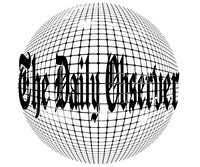The Daily Observer London Desk: Reporter- John Furner
Scientists have received the first transmissions from a muon detector placed 1 km underground in the Stawell Underground Physics Laboratory.
The muon detector records the amount of cosmic radiation that reaches the laboratory located in Stawell Gold Mines. Muons are heavier versions of electrons that are made from the collision of cosmic rays with atoms in Earth’s atmosphere. The muon detector records these collisions to determine levels of cosmic radiation.
It is crucial that low levels of radiation are recorded to ensure that the environment surrounding the SABRE South experiment, which will be transported to the laboratory in 2024, is as pristine as possible in order to detect dark matter particles.
In its first few days, the muon detector recorded about five detections per day, far lower than the more than the around 1.8 million interactions that would be expected above ground.
ARC Center of Excellence for Dark Matter Particle Physics (CDM) researchers will continue to monitor the levels of radiation before the SABRE South experiment vessel is transported into SUPL.
The SABRE South experiment mirrors an experiment in the Northern Hemisphere and will determine whether readings taken by Italian researchers are a result of seasonal fluctuations, or dark matter.
CDM Director Professor Elisabetta Barberio says the data collection is an exciting milestone for the project. “Our first data collections showed that by building the laboratory 1 km underground in Stawell Gold Mine, we have managed to reduce the cosmic radiation that will reach our dark matter detector,” Professor Barberio said.
“Our scientists in Melbourne and around Australia will be able to continue to monitor muon levels to ensure cosmic radiation remains low. It is a very significant step in the project that scientists around the world are watching very closely.”
The Chair of SUPL Ltd, responsible for the laboratory’s operations, Sue Barrell, said the milestone paved away for scientific innovation into the future.
“SUPL is a unique facility, bringing together community interests and research objectives. It has been quite a journey to get to this point, but the ground is now set now to deliver some world-class science outcomes.”
CDM researcher and The University of Melbourne Ph.D. candidate Mike Mews was among the researchers who traveled into SUPL to set up the muon detector to communicate with computers above ground.
Mews has also undergone training that will allow him to work underground for extended periods.
“It’s really exciting that we can read the cosmic radiation levels deep underground while sitting at our desks at Melbourne University,” he said.
“I’m looking forward to traveling to SUPL more regularly as the project continues to progress and we create the ideal environment for the SABRE South experiment.”



